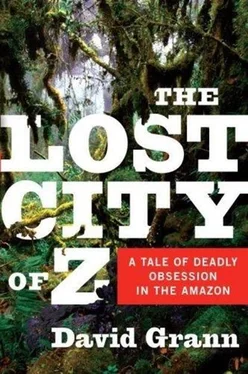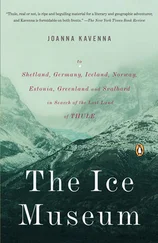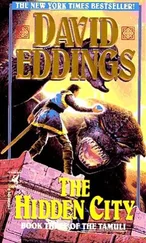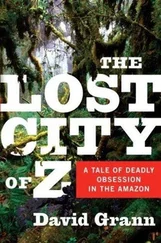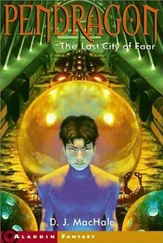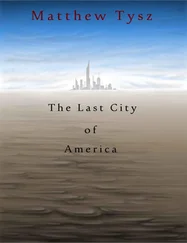Fawcett had often expressed admiration for Rondon, but eventually he grew suspicious of him, too. Fawcett argued that Rondon sacrificed too many lives by traveling in large parties. (In 1900, Rondon embarked on an expedition with eighty-one men and returned with only thirty-the rest had either died or been hospitalized, or had deserted.) Rondon, a proud, deeply patriotic man, did not understand why Fawcett-who told the RGS he preferred in his parties English “gentlemen, owing to greater powers of endurance and enthusiasm for adventure”-always resisted taking Brazilian soldiers on expeditions. A colleague of Rondon's said that the colonel disliked “the idea of a foreigner's coming here to do what he said Brazilians could do for themselves.”
Despite Fawcett's imperviousness to the most brutal conditions in the jungle, he was hypersensitive to the smallest personal criticism. An official from the RGS advised Fawcett, “I think you worry yourself a great deal too much as to what people say about you. I should not trouble myself about it if I were you. Nothing succeeds like success.”
Still, as Fawcett pieced together his evidence of a lost civilization in the Amazon, he worried that someone like Dr. Rice might be on the same trail. When Fawcett hinted to the RGS the new direction of his anthropological inquiries, Keltie wrote back saying that Dr. Rice was “sure to go out again” and might be “disposed to take up the task which you indicate.”
In 1911, the cohort of South American explorers, along with the rest of the world, was astounded by the announcement that Hiram Bingham, Dr. Rice's old traveling companion, had, with the aid of a Peruvian guide, uncovered the Incan ruins of Machu Picchu, nearly eight thousand feet above sea level, in the Andes. Although Bingham had not discovered an unknown civilization-the Incan empire and its monumental architectural works were well documented-he had helped to illuminate this ancient world in remarkable fashion. National Geographic, which devoted an entire issue to Bingham's find, noted that Machu Picchu's stone temples and palaces and fountains-most likely a fifteenth-century retreat for Incan nobility-may “prove to be the most important group of ruins discovered in South America.” The explorer Hugh Thomson subsequently called it “the pin-up of twentieth-century archeology.” Bingham was catapulted into the stratosphere of fame; he was even elected to the U.S. Senate.
The discovery fired Fawcett's imagination. It undoubtedly stung, too. But Fawcett believed that the evidence he had gathered suggested something potentially more momentous: remnants of a yet unknown civilization in the heart of the Amazon, where for centuries the conquistadores had searched for an ancient kingdom-a place they called El Dorado.

EL DORADO
The chronicles were buried in the dusty basements of old churches and libraries, and scattered around the world. Fawcett, exchanging his explorer's uniform for more formal clothing, searched everywhere for these scrolls, which recounted the early conquistadores' journeys into the Amazon. The papers were often neglected and forgotten; some, Fawcett feared, had been lost altogether, and when he discovered one he would copy critical passages from it into his notebooks. The process was time-consuming, but slowly he pieced together the legend of El Dorado.
“THE GREAT LORD… goes about continually covered in gold dust as fine as ground salt. He feels that it would be less beautiful to wear any other ornament. It would be crude and common to put on armour plates of hammered or stamped gold, for other rich lords wear those when they wish. But to powder oneself with gold is something exotic, unusual, novel and more costly-for he washes away at night what he puts on each morning, so that it is discarded and lost, and he does this every day of the year.”
So, according to the sixteenth-century chronicler Gonzalo Fernández de Oviedo, began the story of El Dorado. The name means “the gilded man.” Indians told the Spaniards about this ruler and his glorious land, and the kingdom became synonymous with the man. Another chronicler reported that the king slathered himself in gold and floated on a lake, “gleaming like a ray of the sun,” while his subjects made “offerings of gold jewelry, fine emeralds and other pieces of their ornaments.” If these reports were not enough to excite the conquistadores' acquisitive hearts, it was believed that the kingdom contained vast swaths of cinnamon trees- a spice that was then nearly as precious as gold.
As fanciful as these stories seemed, there was precedent for finding magnificent cities in the New World. In 1519, Hernán Cortés marched across a causeway and into the Aztec capital of Tenochtitlán, which floated amid a lake and shimmered with pyramids, palaces, and ornaments. “Some of our soldiers even asked whether the things we saw were not a dream?” the chronicler Bernal Díaz del Castillo wrote. Fourteen years later, Francisco Pizarro conquered Cuzco, the capital of the Incas, whose empire once encompassed nearly two million square kilometers and included more than ten million people. Echoing Díaz, Gaspar de Espinosa, the governor of Panama, said that the Incan civilization's riches were “like something from a dream.”
In February of 1541, the first expedition in search of El Dorado was launched by Gonzalo Pizarro, Francisco's younger half brother and the governor of Quito. He wrote to the king of Spain, saying, “Because of many reports which I received in Quito and outside that city, from prominent and very aged chiefs as well as from Spaniards, whose accounts agreed with one another, that the province of La Canela [Cinnamon] and Lake El Dorado were a very populous and very rich land, I decided to go and conquer and explore it.” Daring and handsome, greedy and sadistic-a prototypical conquistador-Gonzalo Pizarro was so confident that he would succeed that he sank virtually his entire fortune into assembling a force, which surpassed even the one that had captured the In-can emperor.
Marching in the procession were more than two hundred soldiers mounted on horses and outfitted like knights, with iron hats, swords, and shields; and four thousand enslaved Indians, clad in animal skins, whom Pizarro had kept shackled until the day of departure. In their wake came wooden carts pulled by llamas and loaded with some two thousand squealing pigs, followed by nearly two thousand hunting dogs. To the natives, the scene must have been as amazing as any vision of El Dorado. The expedition headed eastward from Quito over the Andes, where a hundred Indians died from the cold, and into the Amazon basin. Hacking through the jungle with swords, sweating in their armor, thirsty, hungry, wet, and miserable, Pizarro and his men came across several cinnamon trees. Oh, the stories were true: “Cinnamon of the most perfect kind.” But the trees were scattered over territories so vast that it would be fruitless to try to cultivate them. They were another of the Amazon's pitiless cons.
Shortly after, Pizarro encountered several Indians in the jungle and demanded to know where the kingdom of El Dorado was. When the Indians looked at him blankly, Pizarro had them strung up and tortured. “The butcher Gonzalo Pizarro, not content with burning Indians who had committed no fault, further ordered that other Indians should be thrown to the dogs, who tore them to pieces with their teeth and devoured them,” the sixteenth-century historian Pedro de Cieza de León wrote.
Meanwhile, the expedition, less than a year after it had set out, was in tatters. The llamas perished from the heat, and before long the pigs, horses, and even most of the dogs were eaten by the famished explorers. Moreover, almost all of the four thousand Indians whom Pizarro had forced into the jungle died of disease or hunger.
Читать дальше
Конец ознакомительного отрывка
Купить книгу
